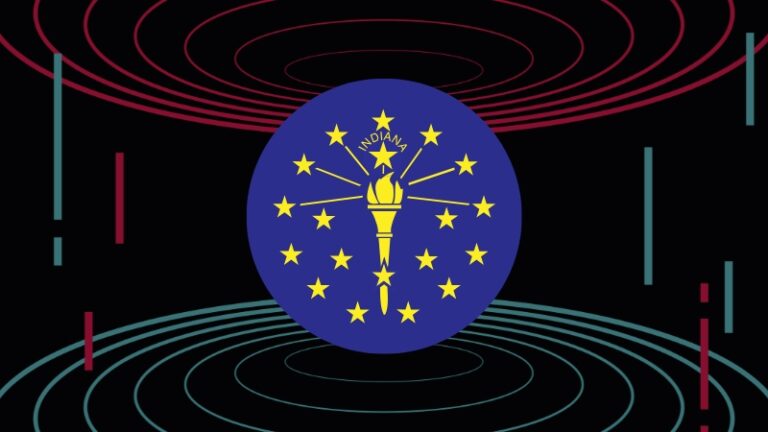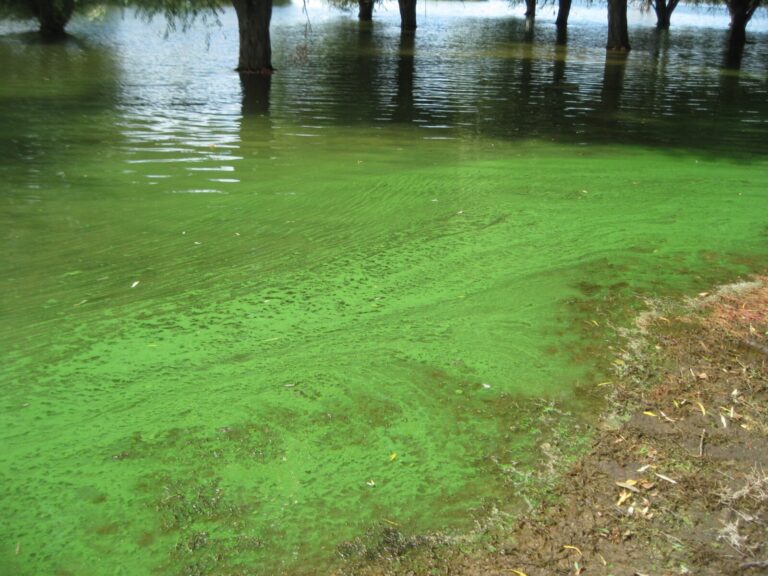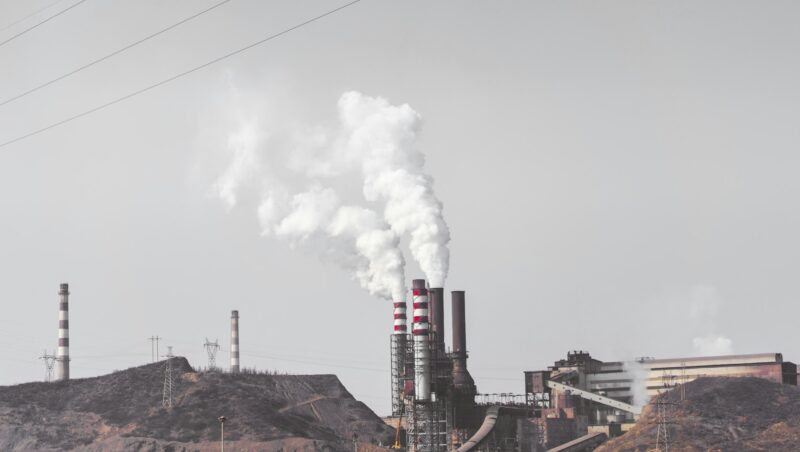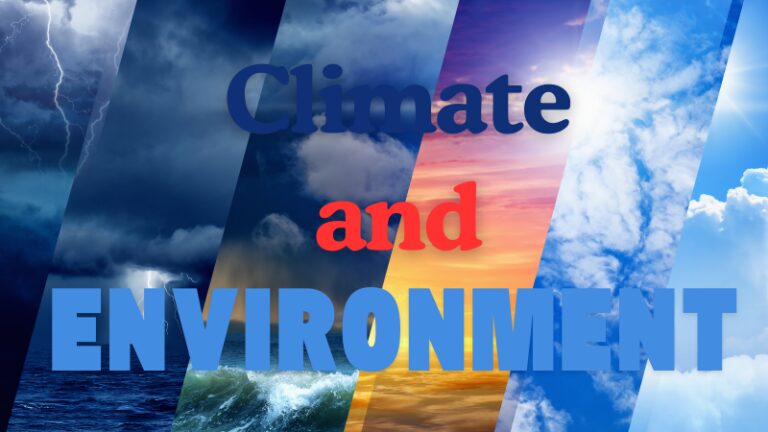Air pollution in some Indiana counties has worsened, and a decades-long improvement in national air quality has slowed since 2015, according to a new federal report.
The U.S. Environmental Protection Agency report titled “Our Nation’s Air: Status and Trends Through 2018” shows that while overall air pollution is decreasing, the rate of decline in national air pollutant concentration averages has slowed, and some pollution indicators are on the rise.
In Indiana, ozone levels in several of the state’s industrial centers are creeping back up.

A professor at Indiana University Purdue University Indianapolis says the improvement in air quality can be linked to strict regulations, but cautions that current regulatory rollbacks may eventually result in poorer air quality.
“This is sort of a success story report on many fronts, but it’s only a success story because of pretty strict environmental regulations,” said Gabriel Filippelli, professor and director of Indiana University-Purdue University Indianapolis’ Center for Urban Health.
“The risk of rolling some of those back is very apparent from the report.” The report shows that the amount of criteria pollutants in the air has dropped significantly since 1990. But the report also shows that the concentration averages for those pollutants around the nation are creeping back up.

Here in Indiana, data used for the report also show an increase in ozone pollution in nearly all monitored cities and in more than half of monitored Indiana counties between 2015 and 2018.
Decreased air quality can lead to reduced lung function, respiratory infections and a host of other cardiovascular and respiratory ailments, including premature death.
“One of America’s great but untold environmental success stories is that we have made – and continue to make – great improvements in our air quality, thanks largely to state and federal implementation of the Clean Air Act and innovation in the private sector,” said EPA administrator Andrew Wheeler, in a statement.
“Emissions of all key air pollutants dropped between 2016 and 2018, and lead and sulfur dioxide concentrations dropped by double-digit percentages during the same period. The U.S. is a global leader in clean air progress, and we’ve proven that we can protect the environment while growing our economy.”
The EPA is touting the report as a victory, but recent EPA decisions may negatively affect the nation’s air quality in the future.

Since early 2017, the EPA has successfully: canceled a requirement for oil and gas companies to report methane emissions; stopped enforcing a rule that prohibited the use of hydrofluorocarbons in air conditioners and refrigerators; stopped requiring authorities to track tailpipe emissions on federal highways; changed a rule designed to limit toxic emissions from major industrial polluters, weakened a pollution permitting program; changed rules on how refineries monitor air pollution in neighboring communities, withdrawn guidance to federal agencies to include greenhouse gas emissions in environmental reviews; lifted a summertime ban on E15 ethanol/gasoline fuel blend and repealed the Obama-era Clean Power Plan and replaced it with the less stringent Affordable Clean Energy Rule.
The EPA is also attempting to: weaken fuel-economy standards for cars and light trucks; eliminate restrictions for new, modified and reconstructed coal plants to capture carbon dioxide emissions, change emissions rules for power plant startups, shutdowns and malfunctions; change rules that cut methane emissions from landfills and weaken a rule that limits mercury emissions from coal power plants.
The EPA’s decisions impact Hoosiers directly, because under Indiana law the state’s environmental rules board is prohibited from adopting a rule or standard that is “more stringent that the corresponding regulation or standard established under federal law.”
What the EPA decides often becomes the standard the state will follow for environmental enforcement. The EPA has more than 800 active and inactive air quality sensors in 37 Indiana counties. The EPA also monitors air quality in 17 Hoosier cities. According to the EPA’s Air Quality System data, 26 out of 46 Indiana counties and 15 out of 17 monitored cities are experiencing more high ozone days since 2015.

According to the Indiana Department of Environmental management, ground-level ozone is formed when sunlight and hot weather bake vehicle exhaust, factory emissions and gasoline vapors. Ozone in the upper atmosphere blocks ultraviolet radiation, but ground-level ozone can irritate peoples’ lungs and cause coughing and breathing difficulties.
The increase is most notable in the state’s industrial centers. In Columbus, reported ozone days rose from 111 in 2015 to 242 in 2018. The Elkhart-Goshen area rose from 96 days in 2015 to 194 days in 2018. Indianapolis also experienced an increase in the amount of yearly ozone days.
It jumped from 122 in 2015 to 145 in 2018. The only two cities not to show an upward trend in ozone days were Bloomington, where the number of ozone days fluctuated, and New Castle, whose monitors did not track ozone days.
IDEM tracks the EPA’s Air Quality Index ground-level ozone data and declares Air Quality Action Days for regions expected to experience high ozone levels in the following days. The issuance serves as a warning for children, the elderly and anyone with health conditions who may additional health problems because of the high levels of ozone.
The city of Indianapolis also issues what it calls Knozone Action Days during high ozone days as part of its Thrive Indianapolis master plan. The city uses the days to teach Indianapolis residents about ozone and other pollutants and what they can do to improve airquality.
“I think the biggest challenge now and, in the future, will continue to be the ozone issue, in terms of health exposure,” said Filippelli, who is also part of Indiana University’s Environmental Resilience Institute.
“That’s always going to be a challenge because we have natural ozone sources as well in Indiana. Decomposition in forests, and so forth, so we’re always going to be fighting an uphill battle. The key is to try to be more aggressive in getting rid of local ozone sources. I think we have to even go overboard with that to achieve air quality outcomes.”
“So it’s not like you can either have clean air or have strong businesses, which is what I think this current administration seems to rely on, but you can have both.” – Gabriel Filippelli
The state of Indiana ranked 19th in the nation for ozone and 45th in 24-hour particulate matter ranking. Indiana has had some air quality victories. Terre Haute was recently recognized for meeting the national standard for sulfur dioxide.
The area’s air quality improved after several industrial emitters either shuttered or changed the way they emitted pollutants. “It’s really attributable to local action. EPA has progressively put in air quality standards for all criteria pollutants,” said Filippelli.
The Duke Energy-Wabash River Generating Station coal-powered plant was retired in 2016, reducing emissions by about 55, 343 tons of sulfur dioxide per year. The Sony DADC plant in Terre Haute switched from coal to natural gas, a reduction of about 150 sulfur dioxide tons per year.
“They even show in that report that, hey, regulation can not only improve air, but at the same time the net GDP goes up. So it’s not like you can either have clean air or have strong businesses, which is what I think this current administration seems to rely on, but you can have both.”












